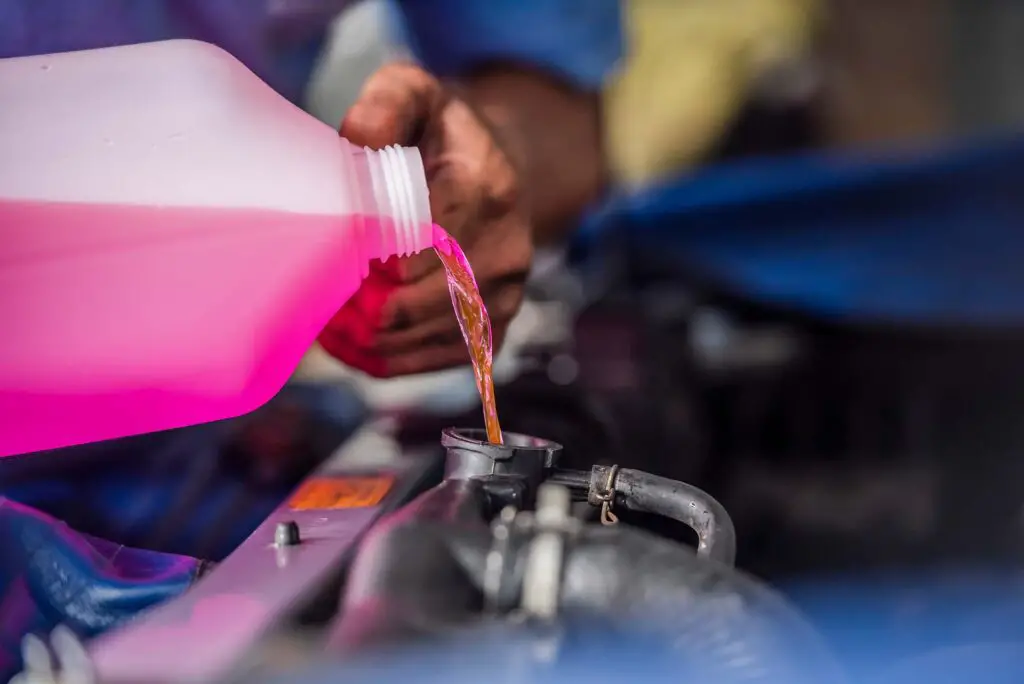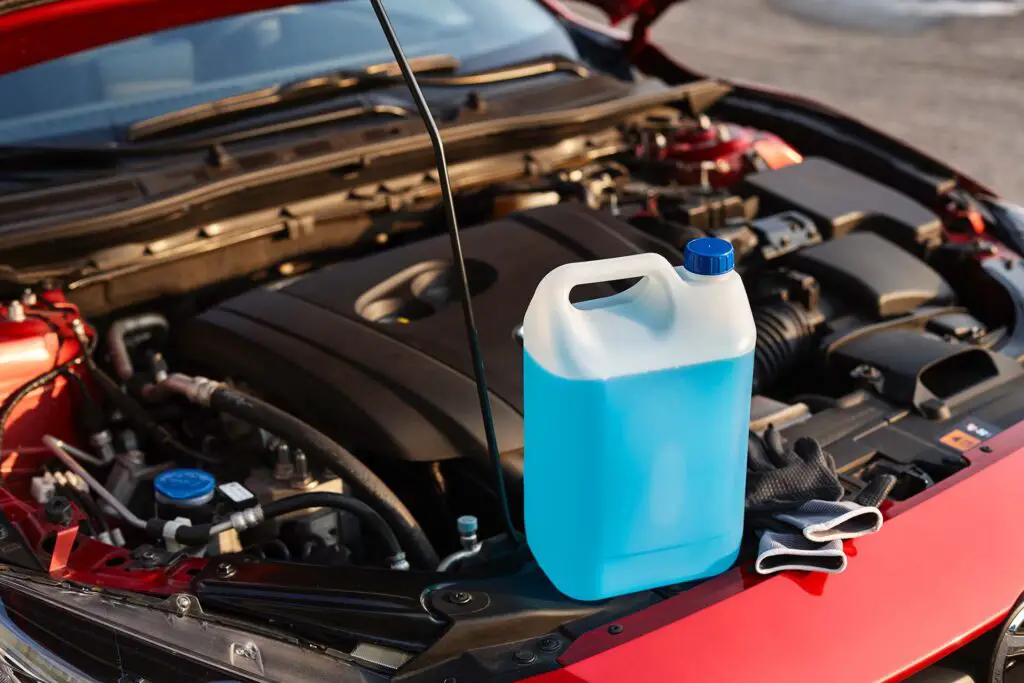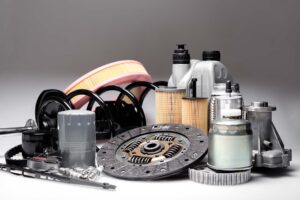When it comes to the intricate workings of a vehicle’s cooling system, one question often appears – what is the difference between antifreeze and coolant? While they both play crucial roles in maintaining engine temperature, understanding the nuances between them is vital. So, let’s delve into the distinctions between these two magical elixirs, exploring their respective definitions, purposes, and functions.
These terms are often used interchangeably, but there is a subtle difference between the two. Antifreeze is composed primarily of ethylene glycol or propylene glycol, and it’s crucial for preventing freezing and overheating in an engine. Coolant, on the other hand, is the combination of this glycol liquid and water that circulates through the engine to regulate temperature.
What Is Exactly Antifreeze and What Is Its Purpose?
Whether you own a brand-new car, a used vehicle, or even one with a salvage title, chances are you’ve had to use antifreeze multiple times throughout your driving career. This useful solution is composed of ethylene glycol or propylene glycol. It may also contain other additives, such as nitrates, borates, silicates, or azoles, but they make up a small percentage of the overall solution.
You’ve probably noticed the vibrant colors of these liquids and wondered what each one means. While the color alone doesn’t indicate a specific type, it’s still good to know for quick identification. Here are some common options:
- Pink or Red – these colors often indicate the presence of a long-life formula with organic acid technology (OAT), which provides extended protection against corrosion and cavitation, making it a popular choice among drivers, especially those that have a newer ride,
- Orange – associated with long-lasting formulations but is typically created using Hybrid Organic Acid Technology (HOAT), offering compatibility with different engine types,
- Green – commonly used in gasoline engines and is typically associated with ethylene glycol-based formulations,
- Blue – mostly used for newer vehicles and usually indicates HOAT, providing effective cooling and corrosion protection for engines of various types.
What Is the Role of Antifreeze in a Vehicle’s Cooling System?
Within a vehicle’s cooling system, this liquid alters the freezing and boiling points of the coolant, ensuring optimal engine operation regardless of external temperature conditions. It circulates through various components, such as the radiator, water pump, and engine block, to absorb and dissipate excess heat generated during engine operation.
Acting as a heat transfer medium, this useful solution facilitates efficient cooling. It prevents the engine’s vital components from overheating, which can lead to damage or failure and add quite a bit of repair expenses to the already high cost of owning a car. Moreover, it protects against corrosion, lubricates moving parts, and helps maintain the overall integrity of the cooling system.

What Is Exactly Coolant and What Is Its Purpose?
Even though these terms are often used interchangeably, coolant is a mixture of antifreeze and water used in a vehicle’s cooling system. Because of that, this precise blend also includes additives customized to suit specific engine requirements and provide optimal cooling performance.
What Is the Function of Coolant in a Vehicle’s Cooling System?
This liquid flows through the engine, absorbing and dispersing heat to maintain a stable operating temperature and prevent overheating, and this is its primary function. As it circulates, it absorbs heat generated by combustion, transfers it to the radiator, and dissipates it into the surrounding air.
By constantly removing excessive heat, coolants ensure the engine operates within its designated temperature range, preventing damage and preserving engine efficiency. Furthermore, just like its counterpart, this liquid aids in preventing corrosion, maintaining proper lubrication, and safeguarding against freezing in colder climates.

Are Engine Coolant and Antifreeze the Same Thing – Key Things to Know
As we’ve just learned, the difference between these mixtures is slight, but the presence of water sets them apart. Understanding some key aspects that differentiate these handy vehicle solutions is crucial for maintaining a vehicle’s cooling system effectively.
In regards to vehicle maintenance, here are a few important aspects you should keep in mind:
Temperature Range of Protection
Regarding temperature protection, there’s one key difference – antifreeze is designed to protect against extreme temperatures, lowering the freezing point and raising the boiling point of the coolant mixture.
Therefore, coolants represent the overall solution used for temperature regulation in a vehicle’s cooling system, while its main ingredient is the specific liquid that deals with freezing and overheating.
Ethylene Glycol vs. Propylene Glycol
Ethylene glycol-based products have been traditionally used and offer excellent heat transfer properties. However, they are very toxic and require careful handling when topping off your cooling reservoir.
That’s why propylene glycol-based coolants have emerged as an alternative with lower toxicity, making them safer for humans, pets, and the environment. There are also hybrid mixtures. This means they combine the characteristics of both ingredients. Making them suitable for people who own multiple four-wheelers, from electric vehicles to traditional gasoline cars.
Corrosion Protection is Not the Same
As already mentioned, both of these mixtures play a vital role in preventing corrosion within the engine and cooling system. They contain additives that inhibit rust, scale, and other forms of corrosion. As they form a protective layer of metal surfaces, preserving the integrity and longevity of critical components. This is especially important for preventing leaks, maintaining proper heat transfer, and preserving the overall efficiency of the cooling system.
What Is the Difference Between Antifreeze and Coolant – Applications and Usage Scenarios
Hopefully, you’re no longer wondering are antifreeze and coolant the same thing. So, let’s venture into their various applications and usage scenarios. Understanding this aspect is vital for ensuring optimal performance of your four-wheeler in different situations. From off-road driving adventures to the stop-and-go traffic in one of the cities with the worst drivers.
Vehicle-Specific Considerations
Several considerations come into play when selecting the appropriate product for your vehicle. First and foremost, it’s the weather conditions. Vehicles in colder regions require antifreeze with a lower freezing point, while those in warmer areas prioritize better heat dissipation properties.
Also, specific engine types, such as gasoline or diesel engines, may have different requirements for mixture formulations, viscosity, or corrosion inhibitors. So, make sure to consult the vehicle manufacturer’s recommendations and guidelines to ensure compatibility and optimal performance.
Here’s a brief overview of the most common engine configurations and what’s usually recommended for each one:
| Type of Engine | What’s Usually Recommended |
| Diesel Engine | Extended-life coolants, such as Organic Acid Technology (OAT) products |
| Gasoline Engine | Conventional green coolants, which are ethylene glycol-based |
| Hybrid Engine | Consult the owner’s manual for your specific model |
| Electric Battery | Specially formulated coolants for electric vehicles |
Other Applications of Antifreeze and Coolant
Beyond their automotive applications, these liquids find utility in various other settings. In industrial and commercial sectors, they regulate temperatures in machinery, equipment, and Heating, Ventilation, and Air Conditioning (HVAC) systems. They’re also employed in aircraft, marine vessels, and heavy machinery to prevent freezing and corrosion.

Coolant vs. Antifreeze – Safety and Environmental Factors
When it comes to driving and maintaining your four-wheeler, prioritizing safety and environmental considerations should be considered crucial driver’s responsibilities. Ensuring not only the safety of yourself and your passengers but of the environment as well means you’re doing your part in being a responsible driver on the famous routes in the US.
Toxicity Concerns With Antifreeze and Coolant
Both of these liquids can be toxic substances if ingested, and because of that, they should be handled with utmost care. They can be extremely toxic to humans, animals, and aquatic life, particularly products that contain ethylene glycol. As coolants are just a mixture including water, they also contain additives that can pose health risks if mishandled.
So, make sure to keep these substances away from children and pets, storing them securely in sealed containers inside your garage. In case of accidental ingestion or contact, seeking immediate medical attention is vital. It’s advisable to familiarize yourself with the safety data sheets provided by manufacturers to understand the specific hazards and precautions associated with the products you’re using.
Safe Handling and Disposal Practices
To ensure safety and prevent environmental contamination, safe handling, as well as proper disposal practices, should be followed. So, wear appropriate protective gear, such as gloves and eye protection, when handling these solutions or flushing your cooling system. Also, avoid spilling or leaking these substances onto the ground or into water sources.
In terms of disposal, it is important to adhere to local regulations and guidelines, the same as when you’re dealing with your car’s battery. Never pour them down drains, sewers, or onto the ground. Local recycling centers or hazardous waste disposal facilities can provide information on proper disposal methods in your area.
Introduction of Environmentally Friendly Alternatives
In response to the safety and environmental concerns associated with traditional formulations, there has been a growing focus on developing more environmentally friendly alternatives. These products aim to minimize toxicity, reduce environmental impact, and enhance overall sustainability.
Furthermore, advancements in technology have led to the development of eco-friendly alternatives, such as biodegradable coolants, that have reduced environmental impact and are safer for both users and ecosystems.
Frequently Asked Questions
Can Antifreeze Be Used as a Coolant and Vice Versa?
Yes, antifreeze and coolant can be used interchangeably, as the presence of water is the only thing that sets them apart, and they serve the same purpose of regulating temperature within the engine.
How Often Should the Coolant Be Replaced?
The frequency of coolant replacement depends on various factors, including the type used and the manufacturer’s recommendations. Generally, it should be replaced every 2 to 5 years or according to the mileage specified in the vehicle’s maintenance schedule.
Are There Any DIY Options for Testing Coolant Quality?
Yes, there are DIY options for testing coolant quality. Test strips are available that can help measure pH and the presence of specific chemicals. Additionally, using a refractometer can provide a quick assessment of the coolant’s freeze point, indicating its effectiveness in preventing freezing.
Knowing the Difference Will Make You a Better Driver
As a vehicle owner, you are responsible for keeping all components of your car maintained, so it’s important to understand the differences between these vital substances. Now that you know what the cooling system of your four-wheeler needs, all that’s left to do is stay on top of its maintenance requirements and enjoy a safe and enjoyable ride.








